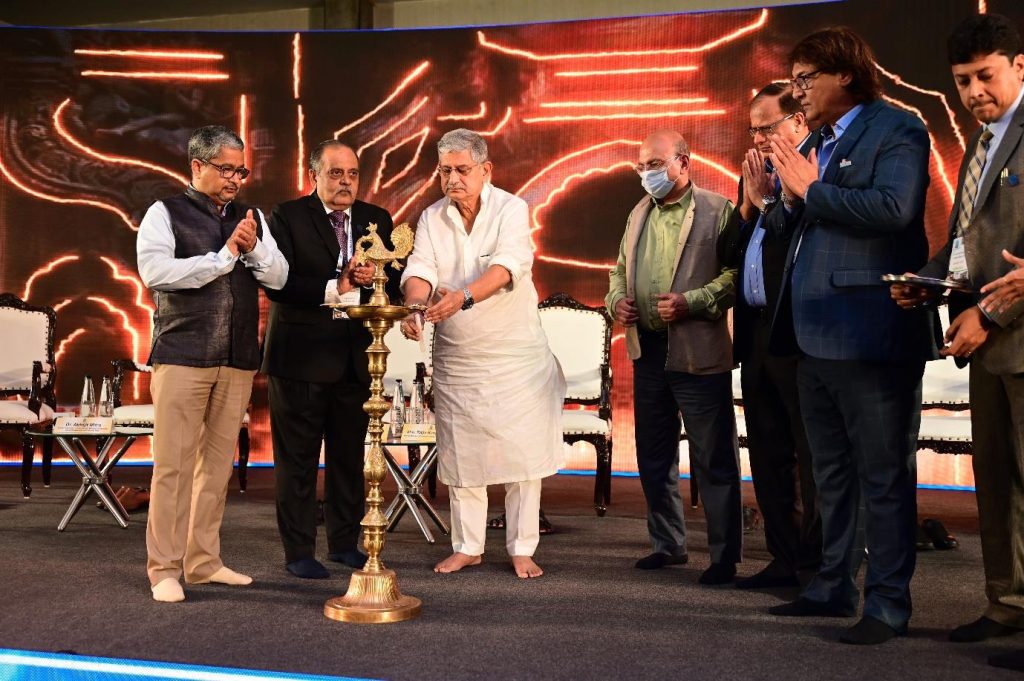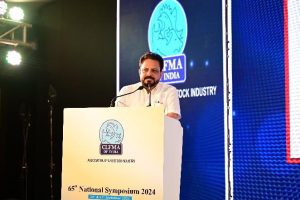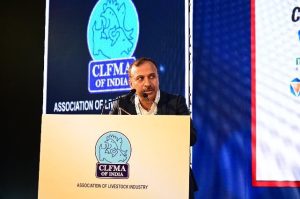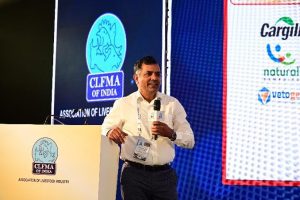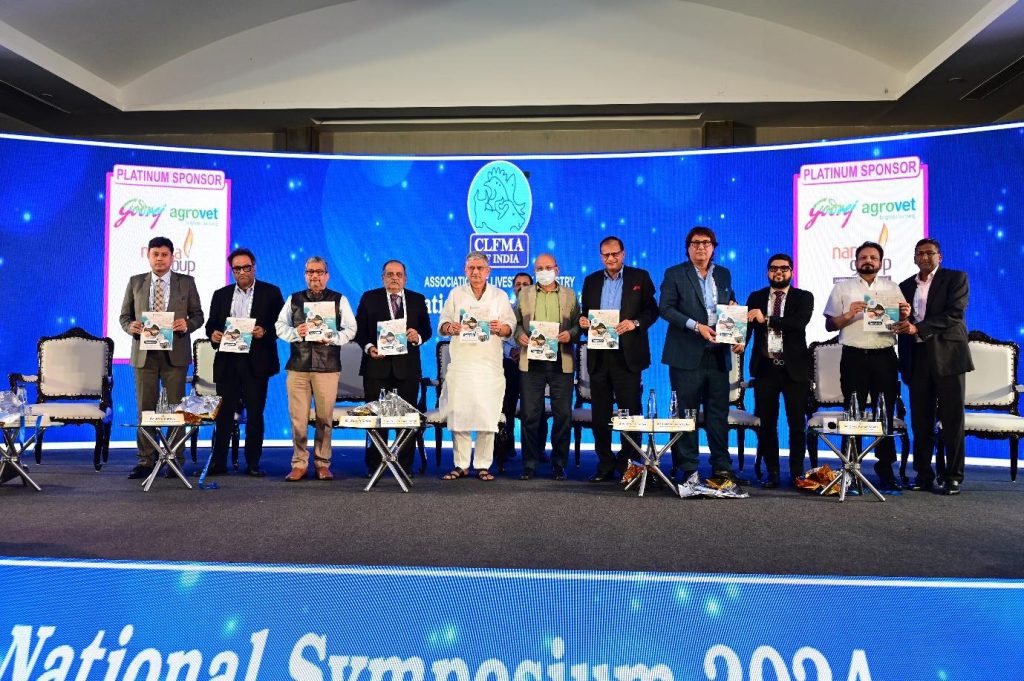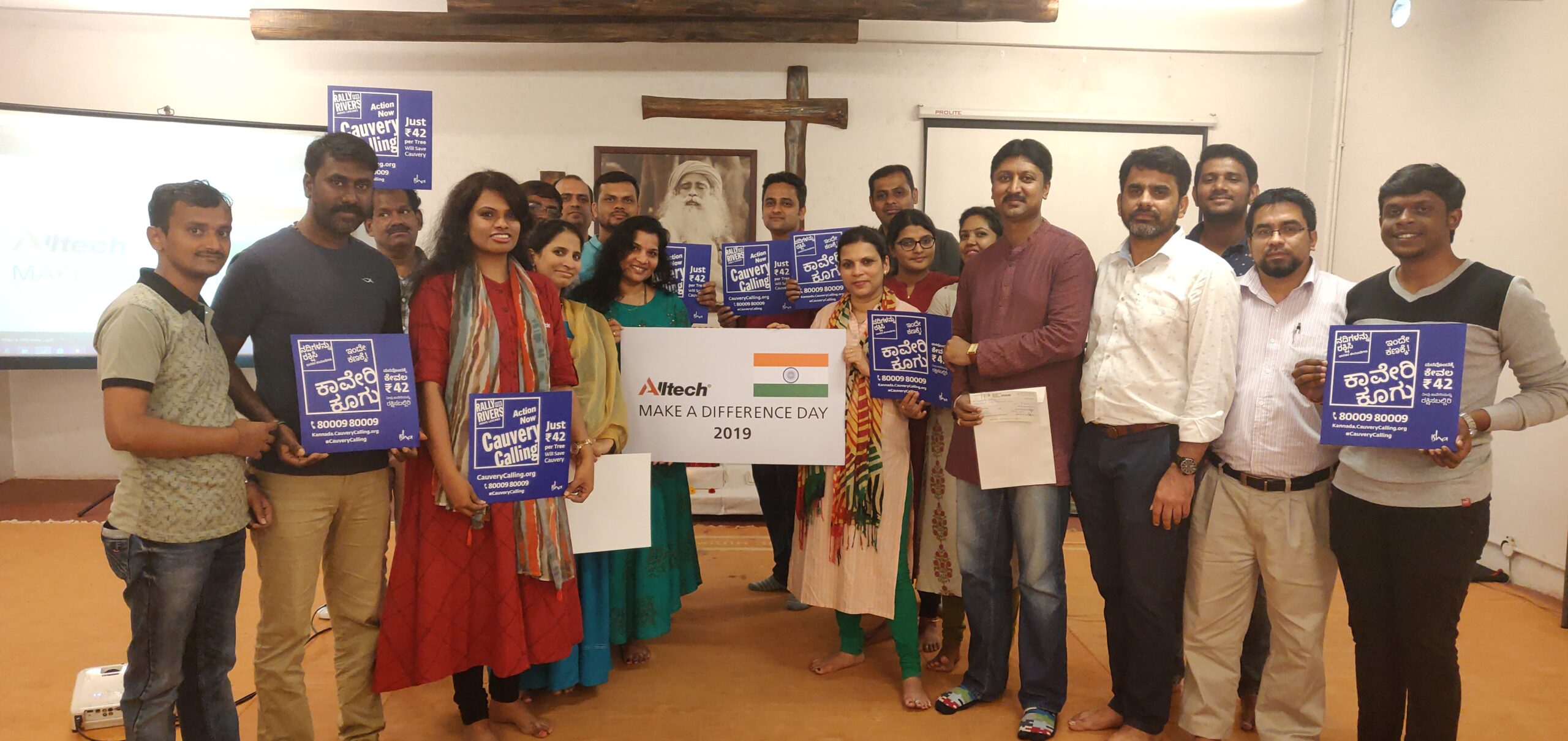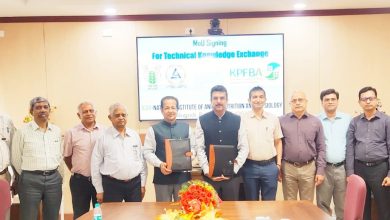65th National Symposium 2024 – CLFMA OF INDIA
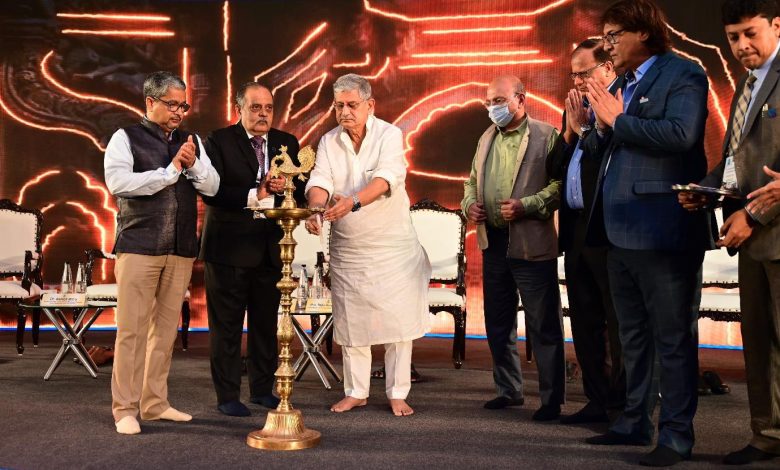
65th National Symposium 2024
“Sustainable Livestock Sector: Threats, Challenges and Opportunities”
Date : 20th & 21st September, 2024
Venue : Hotel Novotel Goa Resort and Spa, Candolim, Pin 403515, Goa – India
CLFMA OF INDIA, AN ASSOCIATION OF LIVESTOCK INDUSTRY, successfully concluded a two-day symposium, culminating in the publication of a comprehensive report that details the deliberations and findings of the event.
“Sustainable Livestock Sector: Threats, Challenges and Opportunities”
CLFMA OF INDIA, AN ASSOCIATION OF LIVESTOCK INDUSTRY, conducted the two day Symposium and has brought about the comprehensive report detailing the deliberations and outcomes of the Symposium.
Presented by: Suresh Deora, Chairman of CLFMA OF INDIA (2023-2024)
A two-day Symposium was organised by CLFMA OF INDIA – AN ASSOCIATION OF LIVESTOCK INDUSTRY. The 57th Annual General Meeting and the 65th National Symposium were held on September 20 and 21, 2024, at Hotel Novotel Goa Resort and Spa, Candolim, Goa.
With a legacy of more than five decades in the livestock industry, CLFMA OF INDIA has established itself as a key policy influencer within the sector. The 65th National Symposium 2024, themed “Sustainable Livestock Sector: Threats, Challenges, and Opportunities,” brought together stakeholders from across the livestock industry.
The event was attended by nearly 400 dignitaries representing various sectors, including feed manufacturers, dairy and aqua farmers, veterinarians, nutrition experts, government officials, academicians, scientists, national and international company representatives, and members from various other agro companies.
The 65th National Symposium aimed to foster collaboration between the livestock industry and governmental initiatives to further the development of the livestock sector. The industry seeks to play a crucial role in implementing government policies and programs to strengthen the livestock sector. Through innovative ideas and initiatives, the livestock industry aims to support the government in developing a more robust sector, ultimately leading to higher-quality products and benefiting the farming community.
The symposium featured a diverse group of resource persons, including government officials, professionals, scientists, and representatives from the private sector. The two-day event delved into various issues and proposed solutions to address them. The report outlines and summarises the key points discussed, discussed during the symposium sessions.
The Chief Guest for the inaugural session was Shri Rajiv Ranjan Singh, Hon’ble Minister of Fisheries, Animal Husbandry and Dairying, Government of India and Dr. Abhijit Mitra, Animal Husbandry Commissioner, Government of India, was as the Special Guest.
Established in 1967, CLFMA has played a pivotal role in promoting the animal husbandry sector, with a focus on balanced animal nutrition to enhance productivity. Since 2002, the organization has expanded to represent a diverse membership of over 250 stakeholders,
including those from the dairy, poultry, and aqua sectors, as well as feed additives manufacturers, breeders, integrators, and vaccine producers.
Inaugural session:
The Inaugural Session of the CLFMA of India Symposium commenced on Friday, September 20, 2024, at the Hotel Novotel Goa Resort and Spa, Candolim, Goa. The event drew the participation of esteemed dignitaries, industry leaders, professionals, scientists, and officials, who collectively explored the future of animal husbandry, dairy, and aqua farming, with a focus on technology, challenges, opportunities and more.
In keeping with India’s deep-rooted cultural traditions, the symposium began with a lamp-lighting ceremony, symbolizing the invocation of divine blessings. This ceremony was graced by the presence of the Chief Guest, Shri Rajiv Ranjan Singh, Hon’ble Minister of Fisheries, Animal Husbandry & Dairying, along with Mr. Suresh Deora, Chairman of CLFMA OF INDIA; Mr. Divya Kumar Gulati, Deputy Chairman of CLFMA OF INDIA; Dr. Abhijit Mitra, Animal Husbandry Commissioner; Shri Tarun Shridhar, IAS (Retd.); Mr. Balram Singh Yadav, MD of Godrej Agrovet Ltd.; and Mr. Abhay Shah, Hon. Secretary of CLFMA of India.
Following the traditional ceremony, Mr. Suresh Deora extended a warm welcome to Shri Rajiv Ranjan Singh, Hon’ble Minister of Fisheries, Animal Husbandry & Dairying, Government of India and felicitated to the Hon’ble Minister with a bouquet, a shawl, and a memento to mark the occasion. In a series of felicitations, Mr. Divya Kumar Gulati, Dy. Chairman and Mr. Naveen Pasuparthy, Deputy Chairmen of CLFMA, honored Dr. Abhijit Mitra, Animal Husbandry Commissioner, while Mr. Nissar F. Mohammed, Treasurer of CLFMA, felicitated Shri Tarun Shridhar, IAS Retd. Additionally, Mr. Abhay Shah, Hon. Secretary honored Mr. Balram Singh Yadav, MD of Godrej Agrovet Ltd., to the applause of the attendees.
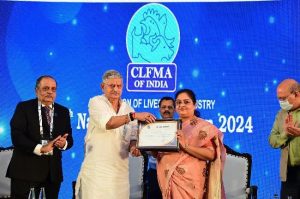
Mr. Divya Kumar Gulati, the convener of the Symposium, delivered the opening address, emphasizing the transformative and impactful nature of the discussions and insights that would follow. He highlighted the pressing issue of high prices for soya meal and corn, exacerbated by the government’s Minimum Support Price (MSP) and the ethanol mandate, urging a collective effort to balance the situation.
Mr. Suresh Deora, Chairman, in his address, emphasized CLFMA’s role as a bridge between livestock farmers, the government, and the industry, while urging the Hon’ble Minister Shri. Rajiv Ranjan Singh, to help stabilize the prices of key raw materials like maize and corn.
Shri. Tarun Shridhar, IAS (Retd.) delivered the Thematic Address where he thanked CLFMA OF INDIA for the support. “In the initial years, CLEFMA was a small organisation but over the last 6-7 years it has turned into an active Association for the Livestock Industry,” says Shri. Tarun Shridhar, IAS Retd. (Himachal Pradesh) was a Member (Administrative) of the Central Administrative Tribunal.
Shri Tarun Shridhar, IAS (Retd.), emphasized the need for sustainable policy interventions that not only consider environmental issues but also ensure the continued consumption and production of livestock products. He underscored the importance of viewing the livestock sector as a vital food sector and highlighted challenges like low productivity, anti-microbial resistance, greenhouse gas emissions, and misinformation campaigns.
Pointers from the Thematic address by Shri. Tarun Shridhar, IAS (Retd.) retired IAS (Himachal Pradesh) was a Member (Administrative) of the Central Administrative Tribunal:
1. He said, “Any sector to progress and grow – policy intervention has to have sustainability of the sector. Suitability should not just be focused on the environmental issues. Sustainability will happen only when consumers continue to consume livestock products and farmers continue to produce them.
2. The global population is growing drastically and food experts say that the demand will have to be met by animal sources nutrition. Globally, 1/3 of the protein requirement is met from animal sources, however the distribution is highly skewed – 60% in the developed world and less than 20% in the developing nations. This gap needs to be bridged.
3. We have to look at the livestock sector not merely as a livelihood sector or a production sector, but as a food sector, a sector that provides the basic need of humans. Economic growth is a phenomenon, which cannot be ignored.
4. Rapid urbanisation is taking place and this is a leading opportunity for the livestock industry. Unlike the agriculture sector, livestock industry has a strong entrepreneurship charter to it.
5. Agriculture is still considered as a family tradition. It’s dependence upon direct cash infused subsidies is very low as compared to crop husbandry, which needs to be capitalised upon.
6. Except for shrimp which has been in the export industry. The export markets needs to be tapped into. “We are the 3rd largest Egg producers in the world – but in terms of export, small countries like Lithuania are ahead of us. Despite being the biggest milk producers in the world, our exporting industry has not flourished.”
7. “Biggest threat we face is low productivity. We need to look at the value of the product not just the production,” he informed.
8. Another threat which needs global attention is anti-microbial resistance and greenhouse gas emissions.
9. Miscommunication and wrong propaganda of livestock industry are another kind of threat the industry is facing, which needs to be countered. Misbranding of products like A2 milk, can mislead the gullible consumer to believe wrong information and this should be checked upon.
10. “I’ve seen a subtle bias towards the livestock industry especially in campaigns like Eat Right Campaign which promotes eating vegetables cereals, fruits and veggies more. Such messages will lead to issues in the livestock industry.
11. Encouraging tourists to explore market places like in many countries.
Shri. Tarun Shridhar’s thematic speech focused on major issues and implementations which can make the livestock industry flourish.
Mr. Balram Singh Yadav, MD, Godrej Agrovet Ltd. thanked CLFMA for the welcome and honour he received as the keynote speaker at the symposium. In his keynote address, he acknowledged the significant growth in the livestock industry over the past 25 years, attributing it to government schemes and the rise of startups in the sector. He highlighted the growing demand for animal-sourced nutrition, the impact of digital solutions, and the importance of addressing greenhouse gas emissions. He also touched on the need for innovation in areas like embryo transfer technology and the shift in consumer preferences toward sustainability.
Pointers from Mr. Balram Singh Yadav, (Managing Director of Godrej Agrovet Ltd.) Keynote address.
1. He said, “The kind of growth we are looking towards, in the future will bring in a lot of prosperity, employment and success to the livestock industry.”
2. While the population growth has been 33% in the last 24 years, the food grain also grew by 67%, fruits and vegetables grew by 37%, milk production almost doubled, and egg production tripled and poultry has gone through the roof. “It is clear that agriculture in the last 5 years has grown to about 4.2 percent, while animal husbandry has shot up to almost 7.5- 8% – creating livelihood for people.”
3. He added, “A lot of Government schemes have been delivering good results. Animal Husbandry Infrastructure Development Fund (AHIDF) scheme has delivered great results and is involved in some great ground work. Programs like National Program for Dairy development, National Livestock Mission are success stories.”
4. In his speech he mentioned that the milk processing capacity has increased up by 14.1 million litres a day; feed processing capacity by 17.9 lakh metric tons per annum, meat processing has shot up by 9 lakh metric ton per annum.
5. There are 71 lakh animals insured and 21 lakh animals covered under the cluster based mass de-worming programs.
6. Pradhan Mantri Matsya Sampada Yojana – one of the most successful in the aqua culture production. “This year we are most likely to exceed our target,” he emphasised.
7. Distribution is getting democratised and quick commerce is rewriting the rules in the retail sector including food sector. The Q-commerce GMV (Gross Merchandise Value) has gone up with 77% year-on Year growth in 2023 and the growth will continue next year too.
8. He adds, “The government data provided mentions that the Q-commerce data may turn key inputs for the new GDP maths. Currently the grocery spending through Q-commerce is around 5-6% and in the coming time it will increase by 10%.”
9. “There is a need to adopt digital solutions,” he pointed. This is the key to get a deeper and better connection and engagement for farmers, especially through various methods like sales force automation, farmer apps and chatbots, and livestock productivity tools.
10. There are vibrant start-up ecosystem setups which are brining innovation to the sector, who are receiving huge amount of investments.
11. The greenhouse gas emissions of livestock and the associated industry will be under increased scrutiny. The livestock emission in 2023 was 7.6 gigatonnes of carbon-di-oxide equivalents.
12. He adds, genetically modified crops will harvest more per unit, which means less water, less land, less chemical usage and more income for the farmers.
13. The feed additives like Methane Modfiers and Rumen inhibitors are at various stages of development which will help in reducing methane emissions up to 50% in cattle.
14. “We are looking at a shortage of maize with E20 mandate and use of maize to produce ethanol,” he expressed.
15. “We are trying our hands at the embryo transfer technology, which will help in the productivity improvement in animal, however we are still struggling as the Indian standard of fresh embryo is 33% and frozen embryo is 12% whereas global standard in fresh embryo is 60% and frozen is 50%.”
16. The figures mention that there is a major shift in the consumer preferences and the future will be shaped by the upcoming food trends towards sustainability. The
customer wants to know where and how the food is being grown like cafe free
eggs, or antibiotic free meats, organic milk etc.
17. He predicts that the consumer will slowly but gradually move out of fad diets like plant-based meat, plant-based milk, and indoor grown vegetables.
18. He concluded by saying, “Misinformation is the biggest issue which the industry is going through and there is a need to have an integrated approach to debunk the myths which causes the sector huge losses. This needs to be rectified.”
After the thought provoking address by Mr. Balram Singh Yadav, MD of Godrej Agrovet Ltd, it was time for the most awaited section of the event – the CLFMA Lifetime Achievement Award. This award recognises the outstanding achievements of individuals in the livestock industry.
Mr. S. V. Bhave, Past Chairman,CLFMA OF INDIA called Dr. O.P. Chaudhary, IFS, Principal Chief Conservator of Forests to receive the CLFMA Lifetime Achievement Award. Shri Rajiv Ranjan Singh, Minister of Fisheries, Animal Husbandry & Dairying, Government of India felicitated Dr. O. P. Chaudhary, a senior IFS officer in the Madhya Pradesh and former Joint Secretary in the Ministry of Fisheries, Animal Husbandry & Dairying, Government of India with a bouquet, shawl and memento.
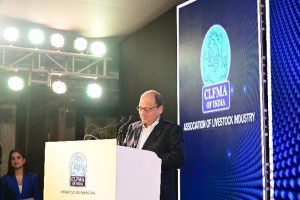
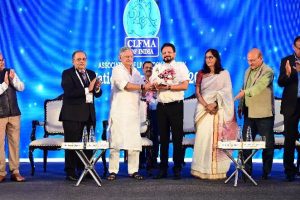
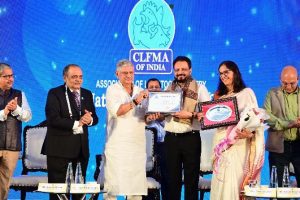
Dr. O. P. Chaudhary, a senior IFS officer in the Madhya Pradesh and former Joint Secretary in the Ministry of Fisheries, Animal Husbandry & Dairying, Government of India in his acceptance speech thanked the livestock industry for giving him the opportunity to receive the CLFMA Lifetime Achievement Award. “Back in the time, there were hardly anyone from the sector would visit Krishi Bhavan but over time the relationship with the industry has improved drastically and now industry is seeing themselves as a part of the department and vice versa. I have also noticed that there are younger generations who are taking up the initiative, which is a great sign,” he said.
The second CLFMA Award was awarded to Dr. Deepashree Desai, is the head and in-charge professor at the Department of Poultry Science at the Bombay Veterinary College under Maharashtra Animal and Fishery Science University. Shri. Rajiv Ranjan Singh, Hon’ble Minister of Fisheries, Animal Husbandry & Dairying, Government of India felicitated her with a bouquet, shawl and memento.


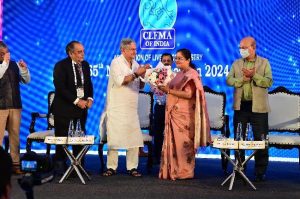
In her acceptance speech, she thanked CLFMA for honouring her with the award and she thanked her guru – Dr Ajit Ranade, her family and almighty to helping her in her endeavour.
Mr. Abhay Parnerkar, Managing Committee Member of CLFMA OF INDIA announced the name of Dr. Udeybir Singh Chahal, for the CLFMA Award. Shri Rajiv Ranjan Singh, Minister of Fisheries, Animal Husbandry & Dairying, Government of India felicitated him with a bouquet, shawl and memento.
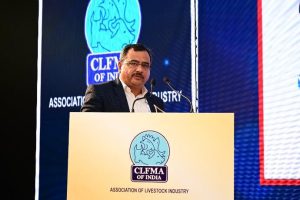
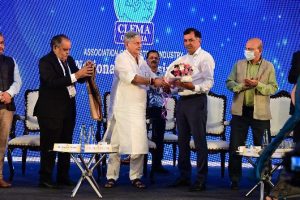
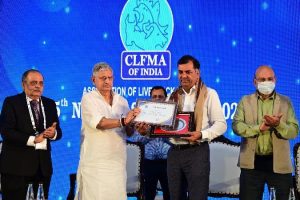
Dr. Udeybir Singh Chahal, the head of Department of Animal Nutrition, College of Veterinary Science, Guru Angad Dev Veterinary & Animal Sciences University, Ludhiana, accepted the award and mentioned that academia should be given due weightage in the industry. He said, “There is need to bridge the gap among agriculturist, veterinarians, especially animal nutritionists. This significant gap can be joined by the industrialist along with academicians – who can make a healthier sector.”
Overall, the session featured the presentation of the prestigious CLFMA Lifetime Achievement Award, first to Dr. O.P. Chaudhary, IFS, Principal Chief Conservator of Forests, and former Joint Secretary in the Ministry of Fisheries, Animal Husbandry & Dairying. Dr. Deepashree Desai, Head of the Department of Poultry Science at Bombay Veterinary College, and Dr. Udeybir Singh Chahal, Head of the Department of Animal Nutrition at Guru Angad Dev Veterinary & Animal Sciences University, honored with CLFMA Awards for their contributions to the sector.
The special guest, Dr. Abhijit Mitra, Animal Husbandry Commissioner, reflected on his long association with CLFMA by saying “CLFMA OF INDIA and I, have been closely associated with each other for a very long time. When I was studying veterinary, I used to collect the matter from CLFMA OF INDIA to complete my assignments. My acquaintance with CLFMA OF INDIA started like this,” and shared insights on improving productivity in the livestock sector, emphasizing the importance of proper feed and breed management. He pointed out the potential of contract farming in maize production and the need for accurate representation of milk productivity in India.
Pointers from Dr. Abhijit Mitra, Animal Husbandry Commissioner, Government of India’s address to the livestock sector.
1. In 1950 the production of milk was 17 million ton and if we look at the number of cows, it has gone down from that and the milk production has increased by 105% in 2019.
2. In American countries, there are milk producers and beef producers too. They calculate productivity by the milk produced by dairy cattle which is divided by the number of dairy cattle.
3. In India, we calculate milk produced by all cattle and divide it by all cattle.
4. We have 10-12 cattle breeds in India like Gir and Sahiwal which have a production of around 12-15 litters a day. But in the process of getting the average – the production levels portrayed as low. But in reality the milk productivity of our country is not as bad as it is conveyed.
5. Cattle breeds like Gir and Sahiwal produce milk in 7-8 lactation cycles. So, its life time production is very high.
6. Talking about the maize production, he points out that contract farming is the only way out. Working alongside with the farmers, agricultural sector, creating and Asian Productivity Organizations (APO) to help maize production. “We can produce large quantity of maize and instead of importing; we can export it to other countries.”
7. We need to also encourage young scientists who are in the field to get recognised and awarded, which will help better the livestock sector.
8. With major companies like Godrej, feed addictive can be produced locally, there are high chances that it will cost lesser and the quality will be better.
9. When we submit data every year to the World Organization of Animal Health, we do not have any such mechanism yet, for which we are working with the Department of Pharmaceuticals, that we can show how much anti-microbial was produced in our country in a year, how much was imported and how much was used. “We take data from INFA and we are working with WHO to make a mechanism for anti-microbial data.
10. By Next year, we will have the mechanism ready for the country’s anti-microbial data.
11. He suggested that the livestock industry and organizations like CLFMA in collaboration with colleges should bring in research for a PhD scholar to work on a research topic which will be decided by the industry.
12. Infertility is one of the biggest problems India is facing in the cattle livestock. Out of 10, three cows are not fertile – it’s either because they have a sickness or they need good nutrition, feed additives, vitamins and minerals.
The Chief Guest of the CLFMA OF INDIA’s 65th National Symposium, Shri. Rajiv Ranjan Singh, Minister of Fisheries, Animal Husbandry and Dairying, Government of India spoke about how India is one of the largest livestock producer. In his speech he focused on various schemes by the government to bring about a change in the livestock sector. “Central Government is taking several important steps to promote domestic solutions in the field of animal husbandry and reduce dependence on imports, under which new technology of IVF has been developed for genetic improvement in Indian breeds.”
Pointers from Shri. Rajiv Ranjan Singh, Minister of Fisheries, Animal Husbandry and Dairying, Government of India’s address to the livestock sector.
1. “India is a fast growing country not just its population but our milk production is also increasing.”
2. “Post 1950, there was livestock in this country, but milk production was not increasing, however today we are in the top level in milk production in the world.”
3.“This was possible only because of the government initiatives. Our market value is Rs. 11.16 crore.”
4. “Our milk production is growing at a rate of 6% per year, whereas across the world, their growth rate is 2%. Our per capita consumption today is 459 grams and in the world it is 325 grams per capita,” he mentioned.
5. “In 2014-15, we produced 78.48 billion eggs today our egg production is 138.38 billion eggs. This has happened due to Government initiative.”
6. “We are number one in the world in milk production and second in fish production. We are exporting 70,000 products annually but in the area of milk and milk production we are not exporting.”
7. “The milk production and farmers do not get the full price for the milk sold – the middle man makes most of the money here and that is because the milk production sector is an unorganised sector.”
8. “We are trying to bring dairy production in the organized sector. The Dairy Development Board has also made an agreement to develop cooperative system.”
9. “Likewise the fishing industry is also in working in an unorganised sector. Pradhan Mantri Matsya Sampada Yojana has many schemes for the fishing sector. There is a need to bring about value addition in the fishing sector to make it more profitable.”
10. “We are vaccinating the cattle with foot-and-mouth disease (FMD) vaccine to prevent FMD in cows and these cows are tagged which we plan to make FMD free.”
11. “Another point which affects the productivity in livestock is climate change.”
12. “The ministry has taken several measures in the development of affordable indigenous technologies for the dairy sector.”
13. “DDGS has the highest amount of protein, after the extraction of energy DDGS can be used as a feeder- there needs to be research on this.”
14. “In the animal husbandry sectors there are many governmental infrastructure, funds and schemes which are offered – these benefits should be availed.”
15. “The country has about two hundred million hectares of land, on which agriculture is not done, there is a need to do research on it.”
16. “In the fishery sector we have launched a transponder, to facilitate fish production and boats, and it is connected with any Android phones- where the fisherman can connect with his family back home, the transponder which is connected to the satellite can issue him an alert, availability of the fish.”
17. “We, you and the government, together, have to overcome this challenge and fight this challenge and remove the obstacles that come in the way of facing this challenge.”
18. “We should remove this obstacle, remove this problem and along with milk production, we will work towards promoting the export of dairy products.”
It was time to uncover the launch of the Souvenir of 2024, which was revealed by Shri.Rajiv Ranjan Singh, Dr. Abhijit Mitra, Mr. Balram Singh Yadav, Mr. Tarun Shridhar, Mr.Suresh Deora, Office Bearers, the Lifetime Achievement Awardee, Mr Sumit Sureka, Mr. Naveen Pasuparthy and Mr. Nissar F. Mohammed.
The inaugural day of the symposium concluded on a high note, with Mr. Abhay Shah, Hon. Secretary of the CLFMA OF INDIA, An Association of Livestock Industry expressing his sincere gratitude to all those who contributed to its success. He emphasised on the pivotal role of knowledge exchange and collaboration in propelling the livestock sector forward. Mr. Abhay Shah, Hon. Secretary of CLFMA OF INDIA highlighted how these factors would drive progress in the livestock sector.
Overall, CLFMA OF INDIA’s inaugural session set a strong foundation for the symposium, bringing to the fore critical issues and opportunities in the livestock sector.
The evening’s festivities included a sumptuous dinner and vibrant live performances. This gave guests a much-needed opportunity to relax, network with industry colleagues, and bond over dinner and music.
